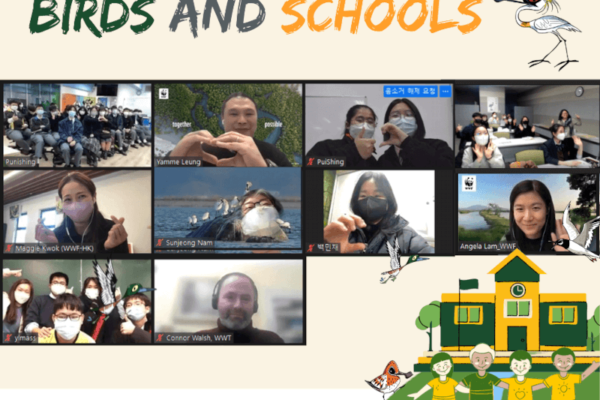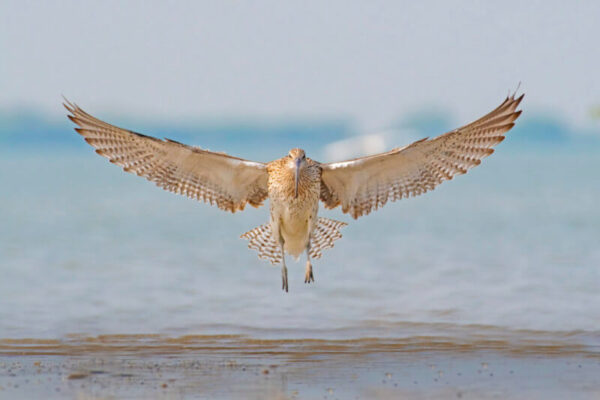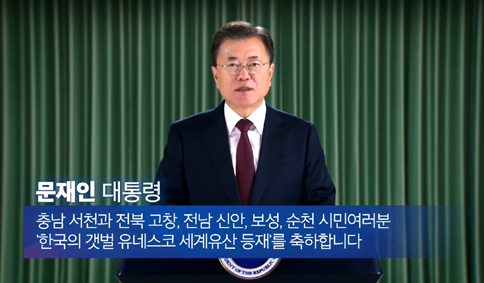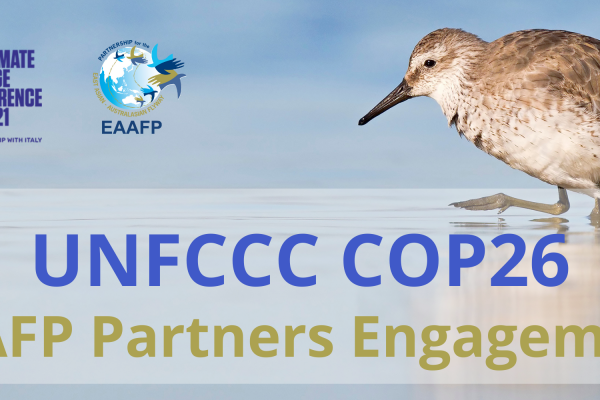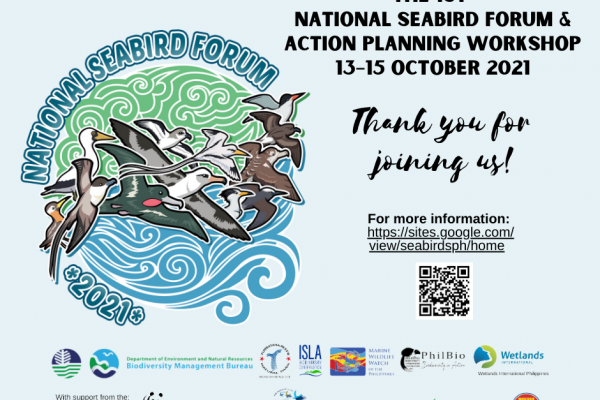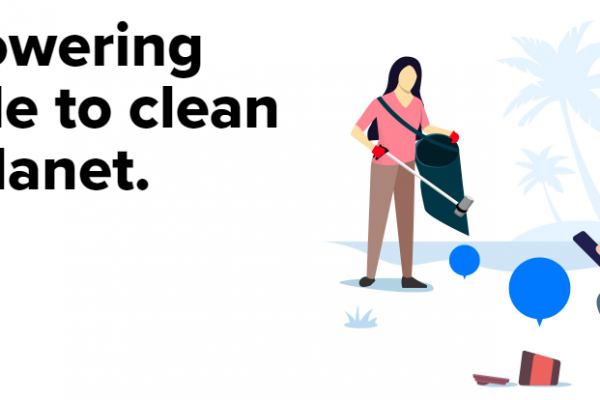-
New study says protected areas don’t always boost biodiversity: management is crucial
The impact on wildlife of designating protected areas such as national parks varies, according to the largest ever global study of their effects on waterbirds. The findings show that…
Continue reading -
The Celebration Ceremony of Korean Getbol World Heritage Inscription
On 27 October, 2021, the Celebration Ceremony of Getbol World Heritage Inscription took place in one of the new World Heritage sites, Shinan County, Republic of Korea (ROK). Beginning…
Continue reading -
Partners engagement for UNFCCC COP26
From 31 October to 12 November 2021, the United Nations Framework Convention on Climate Change (UNFCCC) 26th Conference of the Parties (COP26)…
Continue reading -
The First National Forum and Action Planning Workshop for Seabirds in the Philippines
Despite the restriction imposed by the COVID-19 pandemic, the 1st National Seabird Forum and Action Planning Workshop was successfully held online from 13–15 October 2021. Organized by a consortium…
Continue reading -
Kick-starting the first EAAFP Conservation Status Review
The 1% waterbird population estimate threshold is a key criterion for identifying sites of international importance, including designating Ramsar Sites and EAAFP Flyway Network Sites. Thus, this information of waterbird population estimates needs to be regularly updated. To ensure researchers, government agencies, conservationists and other stakeholders can get access to up-to-date information of waterbird population estimate, EAAFP MoP 10 adopted Decision 12 “Development of a Conservation Status Review of Migratory Waterbird Populations for the EAAFP” in 2018. To proceed with the development of the Conservation Status Review (CSR), the EAAFP Secretariat has contracted Wetlands International (EAAFP Partner) to coordinate the preparation of the first CSR in 2021-2022. This will be implemented in close consultation with the Technical Sub-Committee, Science Unit of the Secretariat, Partners, Working Groups, Task Forces and other experts. To inform all Partners, Working Groups/ Task Forces and other stakeholders about this important project and to seek comments, advice and support, a webinar on the EAAFP Conservation Status Review was organized on 8th April 2021, co-hosted by EAAFP Secretariat (Incheon and Beijing offices) and Wetlands International. A total of 99 participants, from thirteen of sixteen Working Groups and Task Forces, and 10 Partners participated. In Session 1, EAAFP Chair, Mr. Robb Kaler emphasised the importance of Decision 12 adopted at MOP10 and invited all Partners, Working Groups, Task Forces and experts to participate in this project. Ms. Tomoko Ichikawa, Japan Focal Point of EAAFP, also stressed the importance of up-to-date 1% thresholds for EAAFP Network Sites and Ramsar site designation, as well as the importance of national monitoring programmes to provide baseline information to enhance conservation measures. After that, Dr. Taej Mundkur, Senior Technical Officer of Wetlands International introduced the background of the first CSR (CSR 1), the proposed timeline of the project that will cover over 250 biogeographic populations of about 210 species and preparation of final results that would be presented at MoP11. He also established a baseline of seeking feedback during the consultation, recognizing knowledge gaps for some waterbird groups and suggested ways to address these. Session 2 was moderated by Mr. Doug Watkins, Chief Executive of the EAAFP Secretariat. This session focused on engagement and contributing to the Conservation Status Review during 2021. Dr. Mundkur continued to introduce the scope and consultation process including a review on population size estimates, population trends, boundary maps, and provided details of the timeline of the deliverables. Followed by Mr. Tom Langendoen, Technical Officer of Wetlands International, who demonstrated the use of the CSR Consultation Portal for experts to provide population-level feedback during the review process as well as feedback on waterbird population boundary maps. After the introductory sessions, the floor was open for Q & A. Participants actively engaged in the discussion. Many important issues were raised by the participants on reviewing process, refining scope of population to be reviewed, supports to fill in gaps and mobilize experts to contribute, and application of the review to conservation. The webinar ended with closing remarks by Mr. Robb Kaler. Watch the webinar: PPT Presentation by Dr. Taej Mundkur: Session 1: Click here to view Session 1 PPT Presentation Session 2: Click here to view Session 2 PPT Presentation Demonstration videos by Mr. Tom Langendoen on: 1. Commenting WPE https://www.eaaflyway.net/wp-content/uploads/2021/04/1.-WPEcommenting.mp4 2. Reviewing Boundary map https://www.eaaflyway.net/wp-content/uploads/2021/04/2.-Boundaries.mp4 For further information and inquiries, please contact: Dr. Taej Mundkur (Wetlands International) Email: Taej.Mundkur@wetlands.org Dr Qing Zheng (EAAFP Science Unit) Email: science@eaaflyway.net
Continue reading -
Join the Wetlands Trash Hunters
Plastic pollution is a huge environmental and health problem. A lot of attention has focused on plastic pollution in our seas and along our coasts, but much less has…
Continue reading
- 1
- 2

